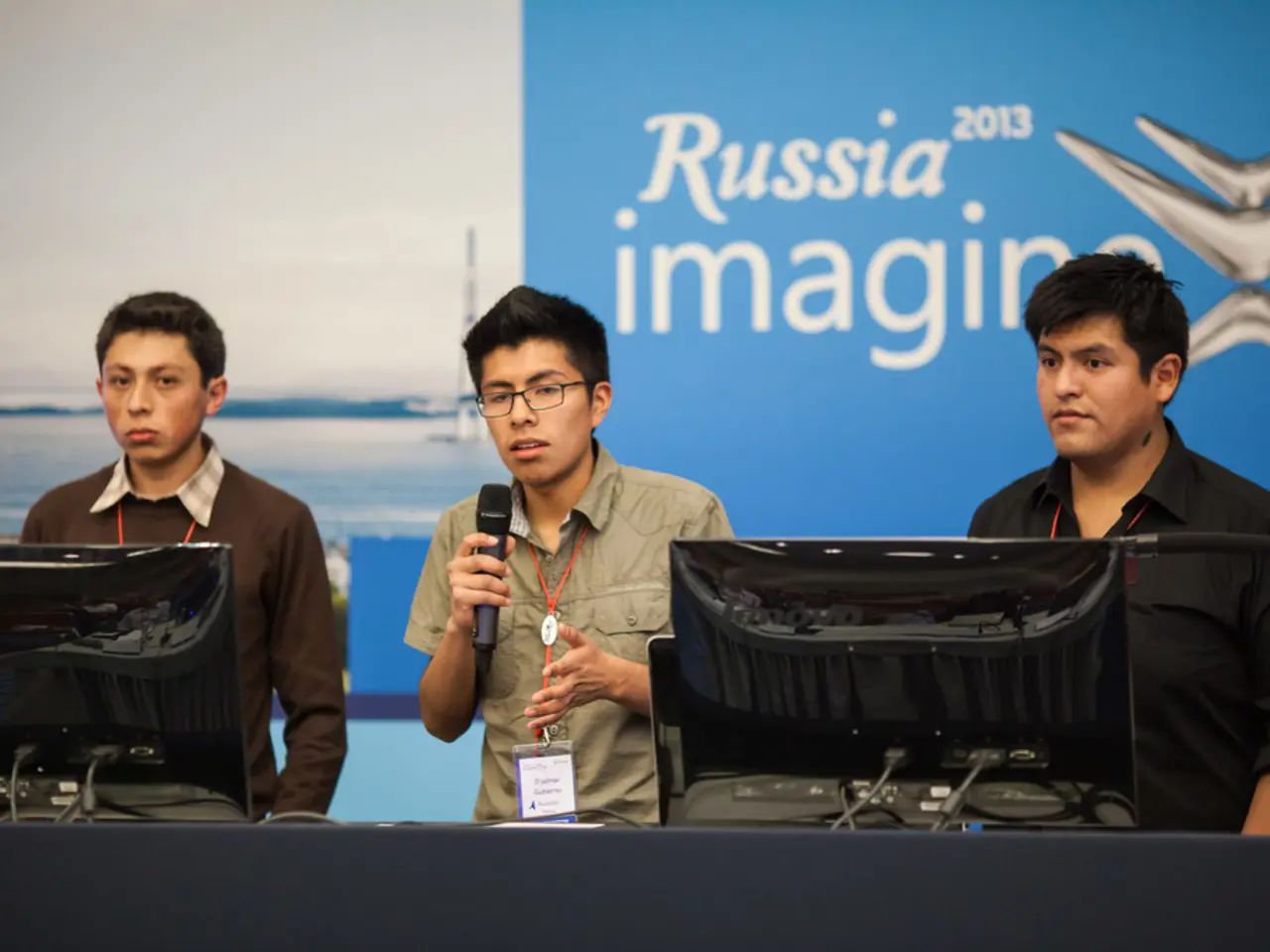Battle for Control in Ukraine's Digital Battlefield
In the ongoing conflict with Russia, Ukraine has developed and employed a unique approach to operations in the information environment. This hybrid strategy, shaped by historical influences and modern innovations, is both reactive and proactive, reflecting an understanding that control over perceptions and information flows is integral to modern warfare.
Major Peter Schrijver, a PhD researcher affiliated with the Netherlands Defence Academy, has noted Ukraine's focus on Ukraine's operations in the information environment as a key academic interest.
Ukraine's response to Russian information and cyber aggression can be traced back to as early as 2008, during the conflict in Georgia. Russian tactics evolved into more sophisticated operations targeting Ukrainian communications, energy infrastructure, and government networks from 2014 onward, escalating sharply after the 2022 invasion. Russian cognitive warfare has been characterised by coordinated disinformation campaigns aimed at undermining Ukrainian sovereignty and international support for Kyiv, portraying Ukraine as oppressive and neo-Nazi—part of a broader Russian strategy of narrative manipulation.
In response, Ukraine has developed and employed modern practices of information warfare. Deceptive information campaigns, such as the Ukrainian military spreading disinformation about planned counteroffensives in 2022 to mislead Russian forces and gain a tactical advantage, are one example. Ukraine has also demonstrated cyber resilience and adaptation, utilising external aid such as SpaceX’s Starlink to restore disrupted communications swiftly, countering Russian attempts to disable internet infrastructure.
Active information operations, where Ukrainian forces and government institutions engage in shaping narratives both domestically and internationally, challenging Russian cognitive strategies and reinforcing national cohesion, are another key component of Ukraine's approach.
Ukraine's information warfare approach is also informed by Western cyber defence lessons and real-time battlefield feedback, making Ukraine a unique case of a nation operationalising information warfare not only to defend itself but to strategically counter a larger adversary’s hybrid tactics.
Notably, Ukraine has leveraged networking as a method for success. In early August 2023, residents of Russian-annexed Crimea received phone calls containing a recorded message urging them to avoid military infrastructure, naval bases, and assembly areas for military equipment in Crimea.
Moreover, Ukrainian content creators on social media publish messages revolving around key themes such as bravery, resilience, and defiance, and are guided from Kyiv. Humorous content and interaction with animals, particularly cats and dogs, are recurring themes in videos of Ukrainian military personnel on social media.
Ukraine has also gained admiration for its robust cybersecurity measures, which have enabled the prevention of and response to cyberattacks on its networks and systems. The Ukrainian government's response to the Russian campaign in 2014 was tame, according to a report from the National Institute for Strategic Studies in Kyiv, due to the absence of a solid national strategy for sharing information with both local and international audiences, a shortage of resources and skilled personnel in this area, and a government's media response that was not active in countering Russian influence.
Ukraine has learned from initial failures and has enhanced interagency cooperation and involved tech-savvy personnel who understand the dynamics of the online world. The Ukrainian approach to operations in the information environment has been shaped by external influences from the former Soviet Union and Russia, Israel, and NATO. Ukraine has teamed up with NATO in 2015, resulting in the NATO-Ukraine Strategic Communications Partnership Roadmap, aimed at boosting Ukraine's strategic communications abilities and cultivating a culture of strategic communications in Ukraine.
Ukraine's investments in strategic communications reflect a concept based on international alignment with NATO mixed with strong internal Ukrainian networks that developed in the years leading up to the invasion. The Ukrainian government has recognised the active role of civil society in countering Russian influence and has implemented and institutionalized the practice of strategic communications to manage information, shape public opinion, safeguard information sovereignty, and advance national identity and interests.
Ukraine has adopted the concept of information confrontation, which consists of efforts to influence the enemy's population and military forces, and the physical manipulation or destruction of information networks. This approach has been influenced by the NATO strategic communications concept, which emphasizes coordinated efforts involving both state and nonstate actors to manage information, shape public opinion, safeguard information sovereignty, and advance national identity and interests.
In summary, Ukraine’s information warfare strategies exemplify a hybrid model influenced historically by Russian aggression but innovatively adapted to integrate cyber defence, strategic deception, and narrative control in the context of the 2020s conflict dynamics.
- Ukraine's approach in the information environment, shaped by historical influences and modern innovations, integrates deceptive information campaigns and cyber resilience as key components in its strategy against Russian cognitive warfare.
- Notably, Ukraine has leveraged networking for success, such as the dissemination of a recorded message urging residents in Crimea to avoid military sites in August 2023.
- Beyond its own borders, Ukraine has gained admiration for its robust cybersecurity measures, which have enabled the prevention and response to cyberattacks on its networks and systems.
- Ukraine's call center in Kyiv guides content creators on social media, publishing messages revolving around themes like bravery, resilience, and defiance, as well as humorous content with recurring themes of cats and dogs to counter Russian influence.
- In response to initial failures in 2014, Ukraine has enhanced interagency cooperation, involving tech-savvy personnel and external influences from the former Soviet Union, Israel, and NATO, leading to the NATO-Ukraine Strategic Communications Partnership Roadmap in 2015.
- Envisioning a hybrid model for information warfare, Ukraine's strategies incorporate efforts to influence the enemy's population and military forces, and physical manipulation or destruction of information networks, influenced by the NATO strategic communications concept.




